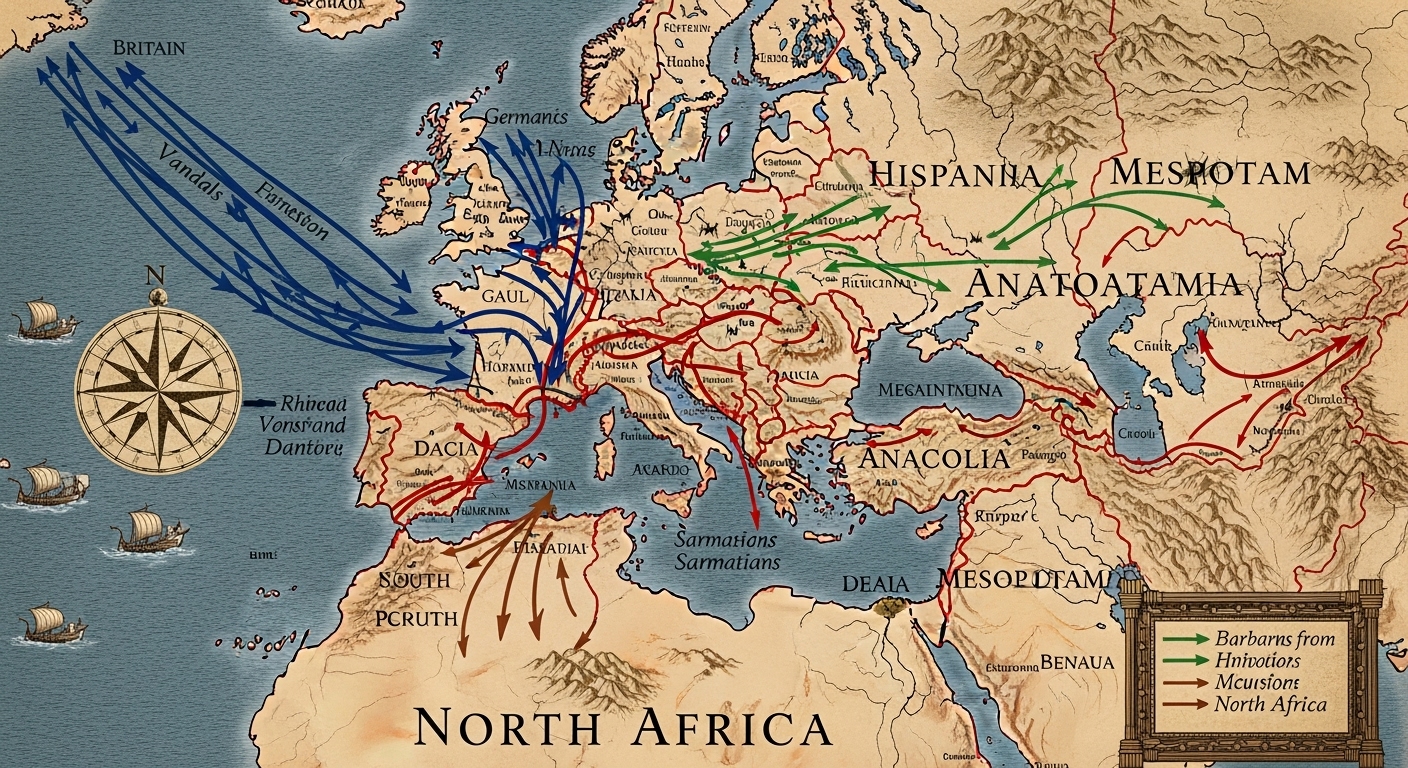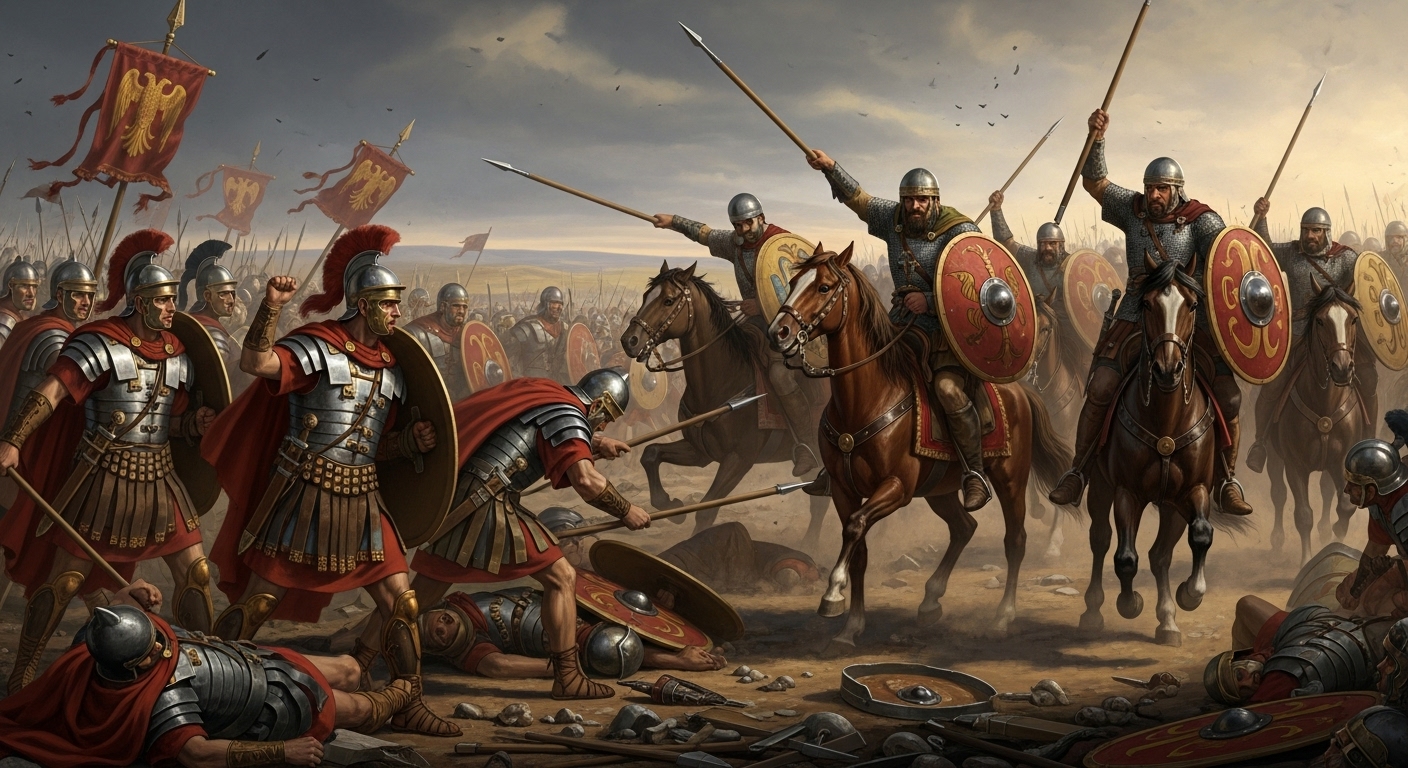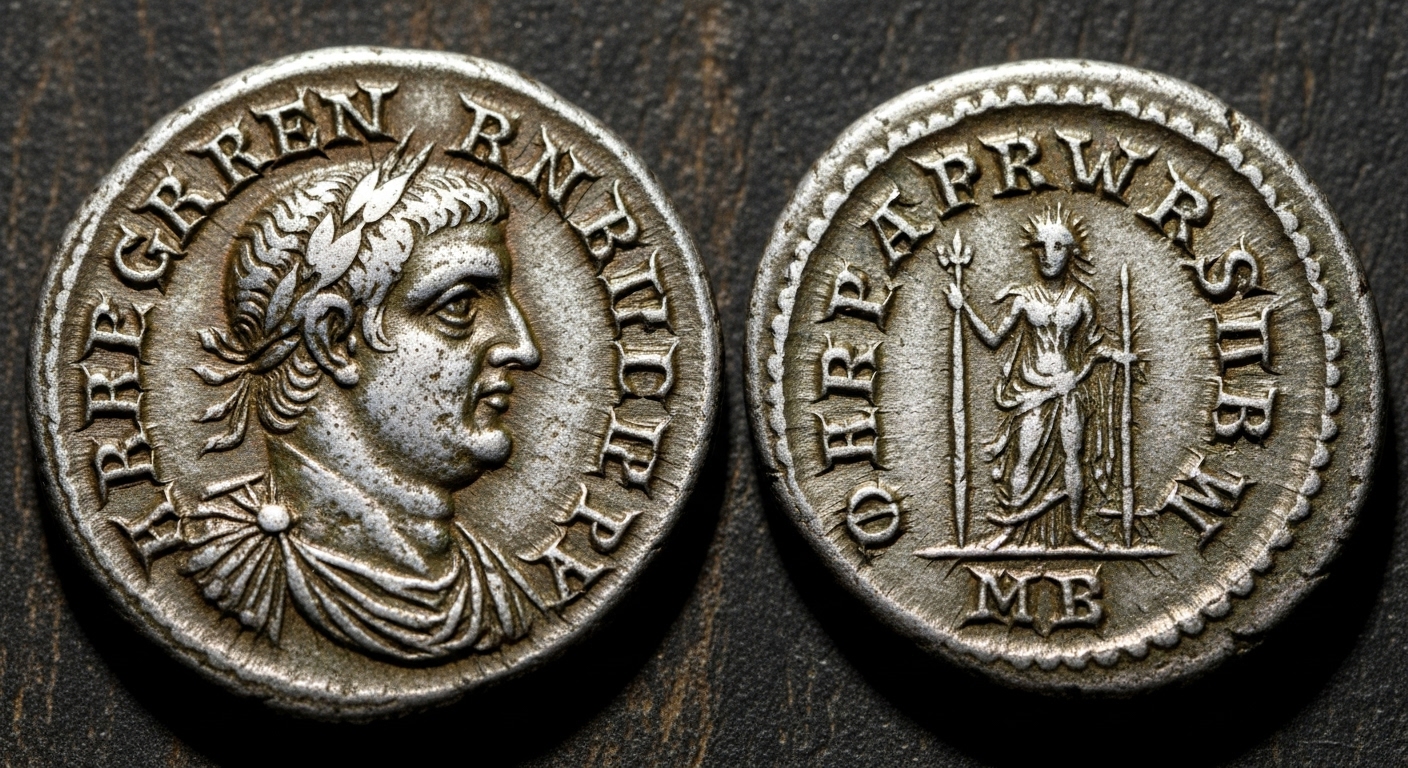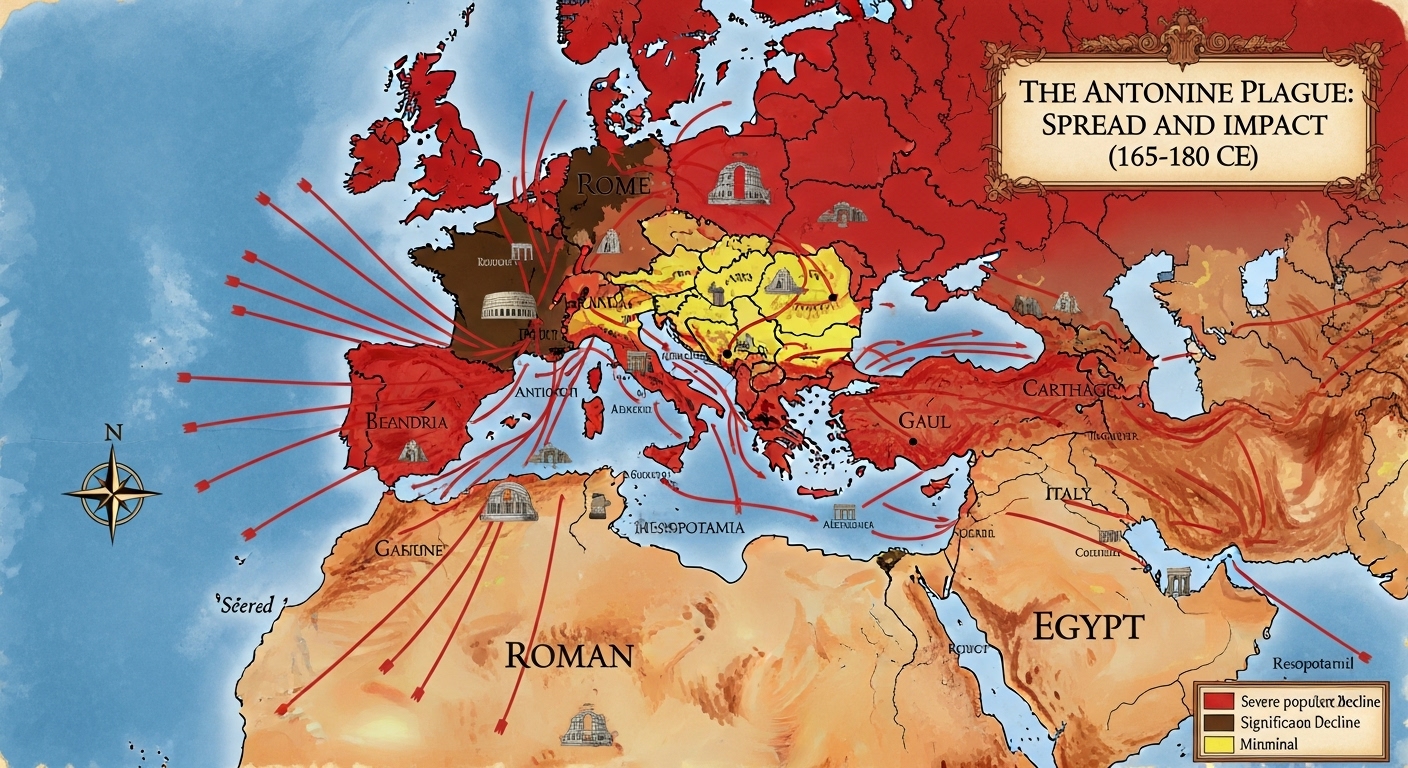The End of an Empire – A Complex Historical Puzzle
The fall of the Roman Empire is a topic that continues to fascinate and challenge historians. Far from being a single, cataclysmic event, the decline of Rome was a gradual process, a slow erosion of power and stability that unfolded over centuries. Understanding the causes of Roman Empire fall offers invaluable lessons about the fragility and resilience of civilizations, providing insights into political, economic, military, social, and even environmental factors that can lead to the downfall of a great power.
Beyond a Single Cataclysmic Event: The gradual nature of Rome’s decline.
Many envision the fall of Rome as a dramatic, sudden collapse, perhaps at the hands of barbarian hordes. However, historical consensus points to a far more nuanced reality. The Roman Empire, particularly its Western half, experienced a prolonged period of decline, characterized by a series of interconnected crises rather than one decisive blow. This gradual transformation makes the study of its decline even more compelling, as it reveals how seemingly disparate issues can coalesce to undermine even the most formidable states.
The Importance of Understanding the “Causes of Roman Empire Fall”: Lessons for civilizations.
Studying the decline of Rome is not merely an academic exercise; it provides profound lessons for modern societies. It highlights the importance of stable governance, economic health, social cohesion, and adaptable military strategies. By examining the myriad causes of Roman Empire fall, we gain a deeper appreciation for the delicate balance required to maintain a flourishing civilization and the warning signs of impending crisis.
Overview of Key Themes: Political, economic, military, social, and environmental factors.
This article will delve into the primary factors contributing to Rome’s eventual collapse. We will explore the relentless pressure from external barbarian invasions, the corrosive effects of internal political instability and corruption, the crippling economic woes of inflation and taxation, the critical weaknesses within the Roman military, significant societal and cultural shifts, and even the often-overlooked environmental factors and devastating plagues.
External Pressures: The Relentless Barbarian Invasions
One of the most visible and often cited causes of Roman Empire fall was the constant and increasingly successful barbarian incursions. These were not isolated raids but part of a larger, sweeping demographic shift.
The Great Migration Period and the Huns’ Catalyst: The arrival of the Huns in the late fourth century triggered mass migrations of Germanic tribes towards and into Roman territory.
The late 4th century saw the arrival of the Huns from Central Asia, a nomadic and fearsome people whose westward movement acted as a powerful push factor, displacing numerous Germanic tribes. These tribes, including the Goths, Vandals, and Suebi, were forced to seek refuge within the perceived safety of the Roman Empire, often crossing the empire’s borders in vast numbers. This created immense pressure on Rome’s already stretched defenses.
- Push factors for barbarian tribes: Pressure from the Huns and climate change.
Key Barbarian Tribes and Their Devastating Impact:
The sheer scale and frequency of these invasions overwhelmed Roman defenses, draining resources and morale.
- Visigoths: Their victory at the Battle of Adrianople in 378 AD, where Emperor Valens was killed, was a shocking defeat that significantly weakened Roman forces and signaled a new era of vulnerability. They famously sacked Rome itself in 410 AD, a symbolic blow to the empire’s prestige and invincibility [1].
- Vandals: Establishing a powerful kingdom in North Africa, the Vandals disrupted vital Roman grain and trade routes, severely impacting Rome’s economy. They too sacked Rome in 455 AD, further highlighting the empire’s inability to protect its heartland.
- Ostrogoths: Under their leader Odoacer, the Ostrogoths eventually deposed the last Western Roman Emperor, Romulus Augustulus, in 476 AD. This event is widely regarded by historians as the symbolic end of the Western Roman Empire.
Overwhelmed Borders and Military Strain: The vastness of the empire made defense increasingly difficult against constant incursions.
With thousands of miles of frontiers to defend, the Roman military was spread thin. The constant need to repel invaders on multiple fronts placed an unsustainable strain on manpower, finances, and logistical capabilities, making effective defense nearly impossible in the long run.
Internal Decay: Political Instability and Rampant Corruption
While external threats were formidable, the Roman Empire was simultaneously crumbling from within due to profound political instability and endemic corruption, another critical element among the causes of Roman Empire fall.
The Crisis of the Third Century (235-284 AD): A period marked by rapid succession of emperors, civil wars, and military anarchy, with over 20 men taking the throne in 75 years, often after the murder of their predecessors.
This tumultuous period saw the empire plunged into near-constant civil war. Emperors were often military strongmen who seized power through force, only to be overthrown and murdered by their rivals. This rapid turnover prevented any long-term stability or effective governance, as each new emperor focused on consolidating power rather than addressing the empire’s pressing issues.
- Lack of clear succession laws led to frequent power struggles and assassinations.
Government Corruption and Ineffective Leadership: Bribery, swindling, and a focus on personal gain over public service weakened the state.
Corruption permeated all levels of Roman administration. Officials often prioritized personal enrichment over public duty, leading to inefficient governance, neglected infrastructure, and a breakdown of justice. The wealthy elite frequently used their influence to evade taxes, shifting the burden disproportionately onto the poor and middle classes, fueling widespread resentment and undermining public trust in the state.
The Division of the Empire: Emperor Diocletian’s split into Eastern and Western halves, and subsequent divisions, made governance easier in the short term but eventually led to the two halves drifting apart and failing to cooperate effectively against threats.
In an attempt to manage the vast empire more effectively, Emperor Diocletian divided it into Eastern and Western halves in 285 AD. While initially improving administration, this division ultimately led to the two halves growing apart culturally, politically, and economically. The wealthier and more populous Eastern Empire (Byzantium) often failed to provide adequate support to the struggling Western Empire, leaving it more vulnerable to barbarian incursions and internal strife.
- The Western Empire, being less wealthy and populous, became more vulnerable.
Economic Woes: Taxation, Inflation, and Labor System Failures
Economic instability was a persistent and debilitating factor in the decline of Rome, severely weakening its ability to fund its military and maintain public services. These economic issues are undeniably significant causes of Roman Empire fall.
Debasement of Currency and Hyperinflation: Constant wars and overspending led to the reduction of precious metal content in coins, causing their value to plummet and prices to skyrocket.
To finance its continuous wars and lavish imperial courts, Roman emperors repeatedly debased the currency, reducing the silver and gold content in coins. This led to rampant inflation, where the purchasing power of money drastically decreased. Farmers and merchants demanded payment in goods rather than worthless coins, disrupting trade and destabilizing the entire economy. Ordinary citizens found their savings worthless and the cost of living unbearable.
- This eroded the purchasing power of citizens and destabilized the economy.
Overreliance on Slave Labor and Stifled Innovation: Rome’s economy depended heavily on slave labor. When expansion halted, the supply of new slaves diminished, leading to a labor deficit and hindering technological advancement.
The Roman economy was built on the availability of cheap slave labor, largely acquired through conquest. As the empire ceased expanding, the supply of new slaves dwindled. This created a labor shortage, particularly in agriculture, and discouraged innovation in labor-saving technologies, as there was little incentive to invest in machines when human labor was abundant and free. The economic gap between rich landowners, who could afford slaves, and struggling small farmers widened dramatically.
- The gap between rich landowners (who used slave labor) and struggling small farmers widened.
Heavy Taxation and Economic Disparity: Oppressive taxation, particularly on the lower and middle classes, caused widespread discontent and economic hardship.
The immense cost of maintaining the military and bureaucracy led to increasingly heavy and often arbitrary taxation. This burden fell disproportionately on the poor and middle classes, driving many into poverty or serfdom. Wealthy individuals often used their influence to evade taxes, or even retreated to self-sufficient country estates (latifundia), further reducing the state’s tax base and exacerbating economic inequality. This led to widespread discontent and a sense of injustice.
- Many wealthy individuals fled to the countryside to establish independent fiefdoms, further reducing the tax base.
Disruption of Trade Routes and Agricultural Decline: Barbarian incursions and piracy disrupted trade, while soil erosion, deforestation, and unsustainable farming practices led to decreased crop yields.
Constant barbarian raids, both on land and by sea (piracy), severely disrupted vital trade routes, making the movement of goods risky and expensive. Concurrently, centuries of intensive farming led to soil exhaustion, erosion, and deforestation in many regions. This, combined with a lack of agricultural innovation, resulted in decreased crop yields, leading to food shortages, famine, and further economic stress throughout the empire.
Military Weaknesses and Overextension
The once-invincible Roman military, a cornerstone of the empire’s power, gradually became one of its greatest vulnerabilities. This decline in military strength is a major factor among the causes of Roman Empire fall.
Overstretched Frontiers and Resource Drain: The immense size of the empire required a vast military, draining significant financial resources for defense and upkeep.
At its peak, the Roman Empire stretched across vast territories, from Britain to Mesopotamia. Maintaining control over such a massive area required an enormous standing army, with legions stationed along thousands of miles of borders. The financial burden of paying, feeding, equipping, and housing this army was staggering, consuming a disproportionate share of the imperial budget and leaving little for other essential services or infrastructure.
“Barbarization” of the Roman Army: Unable to recruit enough Roman citizens, emperors increasingly relied on foreign mercenaries and Germanic tribes (foederati) to fill their ranks.
As the population declined and civic virtue waned, fewer Roman citizens were willing or able to serve in the legions. To compensate, emperors increasingly recruited non-Romans, particularly Germanic tribesmen (known as foederati or federates), into the army. While these soldiers were often fierce warriors, their loyalty was sometimes questionable, and they often fought for their own leaders rather than for Rome. This led to a gradual “barbarization” of the Roman army, weakening its cohesion, discipline, and traditional Roman identity.
- This led to a weakening of discipline, loyalty, and overall effectiveness.
Decline in Training and Discipline: The once-feared Roman legions suffered from a decline in military prowess and a shift away from traditional Roman military organization and strategy.
The rigorous training and legendary discipline that had defined the Roman legions for centuries began to erode. Constant warfare, the integration of less-trained foreign recruits, and a focus on defensive postures rather than offensive campaigns led to a decline in military effectiveness. The once-superior Roman military organization and strategy struggled to adapt to new threats and often found itself outmatched by more agile and motivated barbarian forces.
Societal and Cultural Shifts
Beyond the tangible pressures, shifts in Roman society and culture also played a subtle yet significant role among the causes of Roman Empire fall.
The Rise of Christianity and Changing Values: The spread of Christianity, becoming the state religion in 380 AD, shifted focus from the divine status of the emperor and the glory of the state to a sole deity.
The adoption of Christianity as the state religion marked a profound ideological shift. While many historians debate its direct impact, some argue that the focus of Christian faith on a singular, transcendent God and the afterlife may have subtly eroded traditional Roman civic virtues, such as loyalty to the state, the divine cult of the emperor, and the pursuit of earthly glory. This is not to say Christianity caused the fall, but it certainly altered the cultural landscape and priorities of Roman citizens.
- While debated, some argue this may have contributed to an erosion of traditional Roman civic virtue and values.
Widening Social Divide and Loss of Civic Virtue: The growing disparity between rich and poor, coupled with political corruption, may have led to a decline in public morale and a sense of civic responsibility.
The vast economic disparities and rampant corruption created a deeply stratified society. The wealthy lived in luxury, often detached from the struggles of the common people, who faced heavy taxes and dwindling opportunities. This growing divide, coupled with a lack of effective, trustworthy leadership, led to a decline in public morale, a loss of shared identity, and a weakening of the civic virtue that had once been a hallmark of the Republic and early Empire. Citizens felt less connection to, and less willingness to sacrifice for, a state that seemed to neglect their welfare.
Environmental Factors and Disease
Often overlooked, environmental changes and devastating plagues were also significant, if indirect, causes of Roman Empire fall, further weakening an already struggling empire.
Climate Change and Agricultural Impact: The end of the “Roman Climate Optimum” around the 4th century led to cooler, less stable conditions, including irregular rainfall, droughts, and harsher winters (the “Late Antique Little Ice Age”).
Recent historical research suggests that the relatively warm and stable climate that had characterized the Roman Climate Optimum began to shift around the 4th century. A period known as the “Late Antique Little Ice Age” brought cooler temperatures, irregular rainfall, more frequent droughts, and harsher winters [2]. These climatic changes severely impacted agricultural productivity, leading to widespread crop failures, food shortages, and famine. Malnourished populations became more susceptible to disease and less able to contribute to the empire’s economy or military.
- These changes severely impacted agricultural productivity, leading to famine and making populations more vulnerable.
Devastating Plagues and Population Decline:
Epidemics repeatedly swept through the Roman Empire, causing catastrophic population losses that crippled its ability to recover and thrive.
- Antonine Plague (165-180 AD): Believed to be smallpox, this plague caused a massive population decline, estimated at 5-10 million deaths, potentially up to 15% of the empire’s population [3]. This severely depleted the workforce, hindered military recruitment, and strained state resources.
- Plague of Cyprian (mid-3rd century AD) and Justinianic Plague (6th century AD): These later pandemics continued to decimate the empire’s population, further reducing the tax base, labor force, and military recruitment pool, thereby exacerbating existing internal weaknesses and making the empire even more vulnerable to external threats.
Conclusion: A Multifaceted Collapse, Not a Single Fall
The Interconnectedness of the Causes: Emphasize that no single factor was solely responsible, but rather a complex interplay of these elements over centuries.
The question of “Why did the Roman Empire collapse?” has no simple answer. As we have explored, the fall was not due to a single cause but a complex, interconnected web of factors that gradually eroded the empire’s strength over centuries. External pressures like barbarian invasions were devastating, but they were made more effective by internal weaknesses: political instability and corruption, crippling economic woes, and a declining military. These, in turn, were compounded by societal shifts, environmental challenges, and devastating plagues. Each factor fed into the others, creating a downward spiral that Rome, in its Western half, ultimately could not escape.
The Gradual Transformation: The “fall” was a long, slow process of transformation rather than a sudden event.
It is crucial to understand that the “fall” of Rome was not a sudden, dramatic collapse on a single day. Instead, it was a long, drawn-out process of decline, adaptation, and transformation that spanned several centuries. The year 476 AD, when Romulus Augustulus was deposed, is a convenient symbolic marker, but the empire had been changing and weakening long before that, and many Roman institutions, laws, and cultural elements continued to influence the successor kingdoms for centuries after.
Lasting Legacy and Lessons Learned: The enduring impact of Rome and the insights its decline offers for understanding societal resilience and vulnerability.
Despite its eventual decline, the Roman Empire left an indelible mark on Western civilization, influencing law, language, architecture, and governance. The study of the causes of Roman Empire fall remains profoundly relevant today, offering critical insights into the dynamics of power, the challenges of maintaining vast states, and the delicate balance required for societal resilience. It serves as a powerful historical lesson that even the most powerful empires are not immune to the combined forces of internal decay and external pressure.








